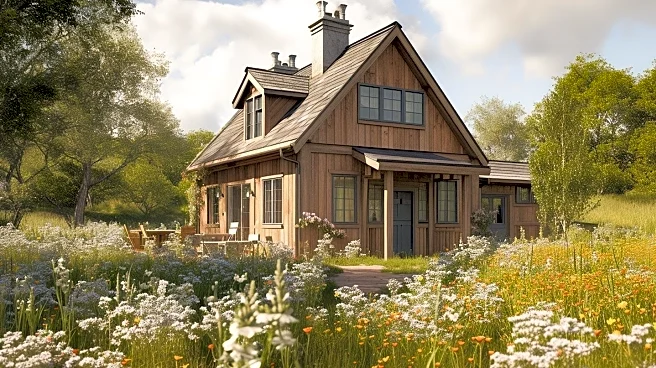What's Happening?
Two Gen X couples, the Falks and the Coopermans, are transitioning to a new phase in their lives as empty nesters by moving to a mixed-use development called Edge-on-Hudson in Sleepy Hollow, New York.
This development offers a community-oriented environment with accessible homes and shared amenities like parks and pools. The couples, who are in their mid-to-late 50s, are not ready to retire but are seeking a vibrant community that supports socializing and active lifestyles. They have sold their previous homes and are moving into townhomes that provide enough space for family visits and are equipped with features like elevators for aging parents. The development is still under construction, but the couples have already moved into rental apartments within the area, anticipating the completion of their new homes.
Why It's Important?
This move reflects a broader trend among Gen Xers and boomers who are seeking to 'rightsize' rather than downsize, aiming for a lifestyle that balances space, accessibility, and community engagement. The decision to move to Edge-on-Hudson highlights the demand for housing developments that cater to active, social lifestyles while accommodating the needs of aging residents. This trend could influence real estate markets by increasing the popularity of mixed-use developments that offer both residential and community-focused amenities. The couples' choice underscores the importance of community and social interaction in maintaining a fulfilling lifestyle as people age, potentially impacting future housing designs and urban planning strategies.
What's Next?
As the development continues to grow, it is expected to include nearly 1,200 townhomes, condos, and apartments, along with a park, grocery store, and hotel. The completion of these amenities will likely enhance the community feel and attract more residents seeking similar lifestyle changes. The Falks and Coopermans, along with other potential buyers, will continue to engage with the developers to finalize their living arrangements. The success of Edge-on-Hudson could serve as a model for other developments aiming to cater to the needs of aging but active populations, potentially influencing future real estate projects across the country.
Beyond the Headlines
The move to Edge-on-Hudson represents a shift in how aging populations view retirement and community living. By choosing a development that emphasizes social interaction and accessibility, the Falks and Coopermans are challenging traditional notions of retirement communities. This approach could lead to a reevaluation of how society supports aging individuals, emphasizing the importance of community engagement and active lifestyles. The development's focus on mixed-use spaces also highlights a growing trend in urban planning that prioritizes walkability and accessibility, which could have long-term implications for how cities and suburbs are designed.











